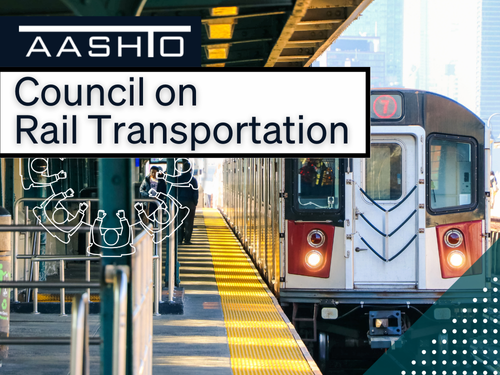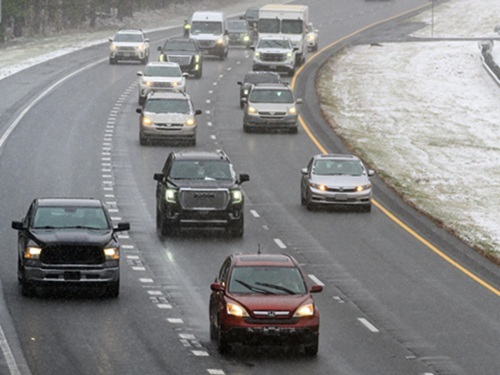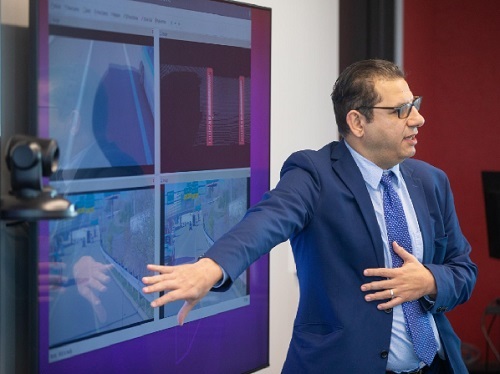The Ohio Department of Transportation is participating in an automotive research project with national implications that will look at how car technology can detect and report roadway issues directly to the agencies in charge of fixing them.
[Above photo by Andrew Higley for UC Marketing + Brand]
That two-year project – which involves the University of Cincinnati, Honda Motor Co., engineering firm Parsons Corp., and consulting firm i-Probe, along with Ohio DOT – will also help prepare roads for self-driving cars by identifying improvements such as where pavement markings are needed or refining intersection information on digital maps.
“We are very excited to be part of this effort to help ODOT in achieving their mission of providing a transportation infrastructure that is safe, accessible, well maintained and positioned for the future,” explained Munir Nazzal, professor of civil engineering in UC’s College of Engineering and Applied Science, in a school blog post.
Nazzal explained this project will test and validate artificial intelligence algorithms that detect deficiencies in infrastructure in real time, as well as integrate that technology into the camera and sensor arrays currently available on select Honda vehicles.
He pointed out that this project will use two Honda vehicles to demonstrate how on-board systems can collect and transmit infrastructure data while they travel on the roads.
“These tools can serve a dual purpose,” Nazzal said, explaining, for example, that they could detect if a stop sign is missing or obscured by overgrown foliage. Cars could relay this information in real time to state transportation officials to identify, prioritize and resolve problems more quickly.
Those systems could also could identify roads that have no shoulders or low shoulders, he added.
“We believe this initiative will be a paradigm shift in road infrastructure asset evaluation, management and maintenance,” noted Sue Bai, chief engineer and chief of data business at American Honda Motor Co.
Preeti Choudhary, executive director of DriveOhio – a division of Ohio DOT – said her group is “excited” about the opportunity to apply vehicle technology in new ways to improve public safety.
“Integrating vehicle data into our operations has the potential to be a game-changer when it comes to better serving Ohio drivers and increasing roadway safety for all,” she pointed out.
State departments across the country are involved in similar projects that involve testing how vehicles interact with roadway infrastructure.
For example, the Virginia Department of Transportation helped vehicle maker Audi of America test a cellular vehicle-to-everything or C-V2X system over a two-year period that incorporated autonomous operations as well as other safety innovations.
Meanwhile, the Georgia Department of Transportation has been working with The Ray, Kia Georgia, and Panasonic to provide “ride-along” experiences along 18 miles of I-85 known as “The Ray Highway” to highlight the capability of vehicle-to-everything or V2X technology.
The Georgia DOT also recently celebrated receiving a series of waiver from the Federal Communications Commission allowing the agency to integrate cellular-based V2X or C-V2X technology on roadways statewide.
To date, the agency said it currently has more than 700 intersections and interstate installations ready to deploy C-V2X technology in addition to the over 1,200 signalized intersections already deployed with connected vehicle technology.
Additionally, the department has developed a C-V2X roadmap that outlines a 10-year funding program to equip all signalized intersections on the state route system.
 Nation
Nation
Registration Open for AASHTO’s Winter Rail Meeting
December 19, 2025 Nation
Nation

